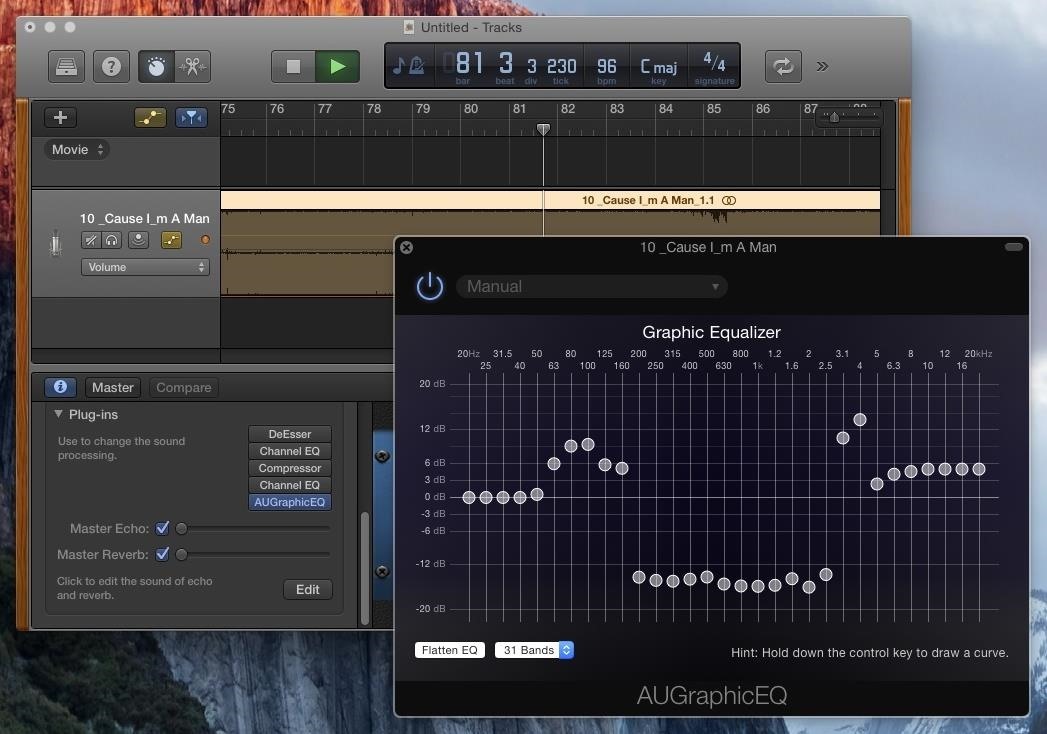고정 헤더 영역
상세 컨텐츠
본문
- How To Use Garageband Ipad
- How To Use Garageband On Mac Without Instruments Free
- How To Use Garageband On Mac Without Instruments Video
You can connect real instruments, such as electric keyboards and guitars to your Mac for use in GarageBand. Using real instruments with GarageBand produces not only better sound, but realistic practice, as you finger the actual instrument and not an on-screen keyboard/string set.
You can connect a real MIDI keyboard through a USB cable (on most newer gear) or a MIDI adapter (on older equipment). You can connect other MIDI instruments, including guitars, woodwinds, and drums, and record onto a real instrument track in GarageBand. Click the red Record button when you’re ready to rock. Move the playhead to just before where you want to start jamming.
MIDI is geek shorthand for Musical Instrument Digital Interface, a standard that has been around for years.
Record Touch Instruments in GarageBand for iPhone. You can record your Touch Instrument performances to play and use in a GarageBand song. When you record a Touch Instrument, your recording appears in a region in the instrument’s track in Tracks view. You can edit and arrange your recordings in Tracks view. Use Drummer Loops in GarageBand for Mac. Quickly add drums to your song using Drummer Loops, a type of Apple Loop that you can customize to fit your song. Work with percussionists in GarageBand for Mac. Use Drummer to add dynamic percussion parts to your song, available in three percussion styles—Latin, Pop, or Songwriter. GarageBand is referred to as a Digital Audio Workstation or DAW. If you've never considered using a computer for music before then you've lucked out by buying a Mac, because though you can debate which professional application is the best or most well-rounded, I think it's fair to say that GarageBand beats them all in ease of use and simplicity. You can connect real instruments, such as electric keyboards and guitars to your Mac for use in GarageBand. Using real instruments with GarageBand produces not only better sound, but realistic practice, as you finger the actual instrument and not an on-screen keyboard/string set. How to Insert Native Instruments Plug-ins in GarageBand This article explains how to insert Native Instruments plug-ins in GarageBand, including: Inserting instrument plug-ins (e.g. MASSIVE, KONTAKT, etc.) in a Software Instrument track. Mar 23, 2020 GarageBand On iPhone: GarageBand is an app developed by Apple itself for those who own a home audio studio or are simply passionate about music. The tool has dozens of features, allowing you to play all types of instruments without necessarily having them in hand. You can use garageband for pc also to make the music. With so many options being.
If the high-quality instrument you have in mind is your own singing voice, connect a microphone (in lieu of the Mac’s built-in microphone) to an audio input port on the computer.
Open System Preferences, click Sound, click Input, and then select Line In. Drag the Input volume slider to an appropriate level. Choose Vocals and the instrument that most closely matches your singing style, such as Epic Diva, Helium Breath, or Megaphone. Garage Band will tailor the effects to your voice.
Don’t worry if you don’t know how to characterize your singing voice; one of your other options is No Effects.

Good microphones are also useful when you’re recording podcasts. If you choose to use a microphone not for singing but for recording your speaking voice, set the option to No Effects (unless you’re going for a comedic effect).

How To Use Garageband Ipad

How To Use Garageband On Mac Without Instruments Free
To add the instrument to a recording, click the Create a New Track (+) button, choose Track→New Track, then select Real Instrument and click Create.
How To Use Garageband On Mac Without Instruments Video
Choose an input source (stereo or mono), depending on how the instrument is connected to the Mac. Select Monitor from the pop-up menu to be able to hear the instrument as you play it, with or without feedback.





댓글 영역